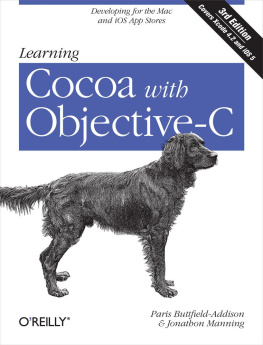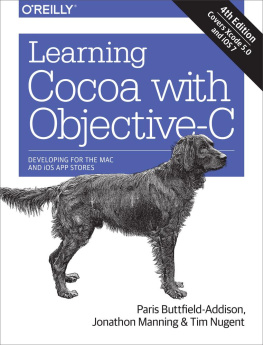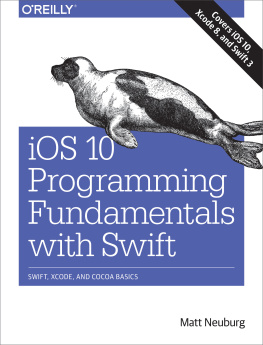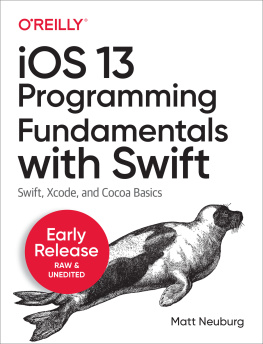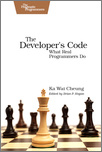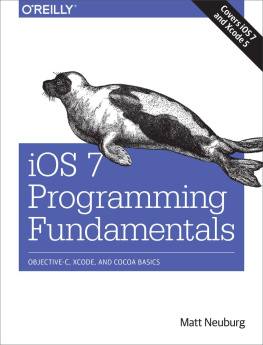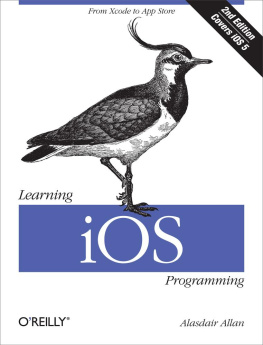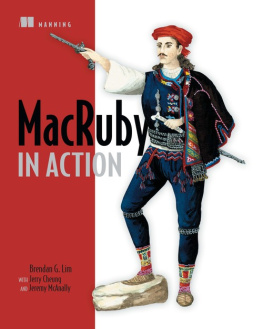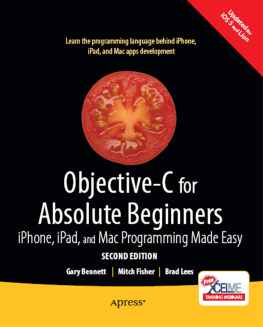MacRuby: The Definitive Guide
Matt Aimonetti
Copyright 2011 Matt Aimonetti
OReilly books may be purchased for educational, business, or sales promotional use. Online editions are also available for most titles (.
Nutshell Handbook, the Nutshell Handbook logo, and the OReilly logo are registered trademarks of OReilly Media, Inc. MacRuby: The Definitive Guide , the image of a northern cardinal, and related trade dress are trademarks of OReilly Media, Inc.
Many of the designations used by manufacturers and sellers to distinguish their products are claimed as trademarks. Where those designations appear in this book, and OReilly Media, Inc. was aware of a trademark claim, the designations have been printed in caps or initial caps.
While every precaution has been taken in the preparation of this book, the publisher and author assume no responsibility for errors or omissions, or for damages resulting from the use of the information contained herein.

O'Reilly Media
Dedication
Pour ma fille, Giana,
Et pour ma femme, Heidi: merci pour ton soutien, tes encouragements, et ta comprhension. Sans toi, ce livre naurait jamais vu le jour.
Preface
MacRuby is Apples implementation of the Ruby programming language on top of the Objective-C technology stack. It allows developers to write native applications for the Cocoa environment using the popular Ruby syntax as well as the well-known and robust Objective-C and C libraries.
This book provides a guide to OS X development for MacRuby developers. Key concepts of MacRuby and Cocoa, as well the popular Cocoa APIs, are covered in this book. The book should help you leverage your existing programming knowledge to make you an efficient and productive MacRuby developer.
I became interested in MacRuby after many years working on/with/around Ruby web frameworks. I started using MacRuby after meeting Laurent Sansonetti (MacRuby lead developer at Apple). Laurent showed me that MacRuby had some interesting things to offer: a programming language that I liked as well as some great APIs and tools that allowed me to develop desktop applications easily and access some cool hardware resources .
This book was written using a version of MacRuby just prior 1.0. All the Xcode screenshots were created using Xcode 4.x. Most, if not all, of the content should be valid for MacRuby 1.x. and later versions.
The Purpose of This Book
The purpose of this book is to:
Teach MacRuby fundamentals.
Provide a guide to develop Cocoa applications using the MacRuby language.
Show concrete examples leveraging the Cocoa technology using MacRuby.
My personal goal is to provide you with a solid foundation, allowing you to understand how MacRuby is meant to be used and why things are designed the way they are. While this book is neither a Ruby book nor a Cocoa book, it should provide you with enough information to understand the MacRuby environment and create rich applications for the OS X platform.
Prerequisites
To get the most out of this book, you should have some programming experience and be familiar with the basics of object-oriented programming. I also assume some very basic knowledge of Ruby, because there are so many places to pick up that knowledge and the language is pretty simple. If you arent familiar with Ruby yet, go to the Ruby language website and read up. Youll get more out of this book if you do that first. If you are already familiar with Ruby but would like to learn more, I recommend the excellent book, The Ruby Programming Language , by David Flanagan and Rubys creator, Yukihiro Matsumoto.
Also, even though we are going to cover some of the basics, understanding some fundamental Cocoa concepts will help. You can learn more about Cocoa as you go along, but should you find something confusing in this book, here are places to look for more information:
Conventions Used in This Book
The following typographical conventions are used in this book:
Italic
Indicates new terms, URLs, email addresses, filenames, and file extensions.
Constant widthUsed for program listings, as well as within paragraphs to refer to program elements such as variable or function names, databases, data types, environment variables, statements, and keywords.
Constant width boldShows commands or other text that should be typed literally by the user.
Constant width italicShows text that should be replaced with user-supplied values or by values determined by context.
Note
This icon signifies a tip, suggestion, or general note.
Warning
This icon indicates a warning or caution.
Using Code Examples
This book is here to help you get your job done. In general, you may use the code in this book in your programs and documentation. You do not need to contact us for permission unless youre reproducing a significant portion of the code. For example, writing a program that uses several chunks of code from this book does not require permission. Selling or distributing a CD-ROM of examples from OReilly books does require permission. Answering a question by citing this book and quoting example code does not require permission. Incorporating a significant amount of example code from this book into your products documentation does require permission.
We appreciate, but do not require, attribution. An attribution usually includes the title, author, publisher, and ISBN. For example: MacRuby: The Definitive Guide by Matt Aimonetti (OReilly). Copyright 2012 Matt Aimonetti, 978-1-449-38037-3.
If you feel your use of code examples falls outside fair use or the permission given above, feel free to contact us at .
Safari Books Online
Note
Safari Books Online is an on-demand digital library that lets you easily search over 7,500 technology and creative reference books and videos to find the answers you need quickly.
With a subscription, you can read any page and watch any video from our library online. Read books on your cell phone and mobile devices. Access new titles before they are available for print, and get exclusive access to manuscripts in development and post feedback for the authors. Copy and paste code samples, organize your favorites, download chapters, bookmark key sections, create notes, print out pages, and benefit from tons of other time-saving features.
OReilly Media has uploaded this book to the Safari Books Online service. To have full digital access to this book and others on similar topics from OReilly and other publishers, sign up for free at http://my.safaribooksonline.com.



